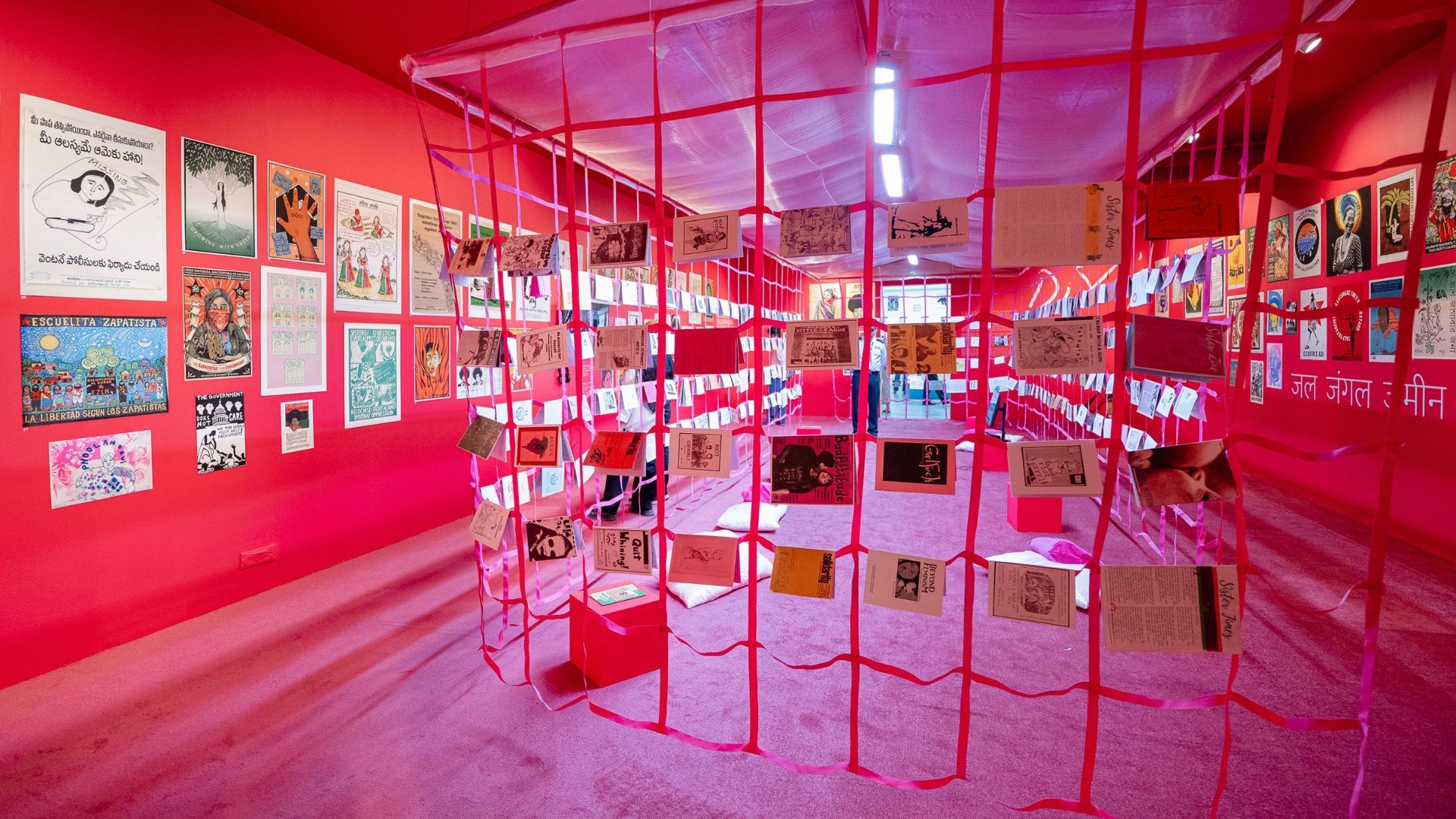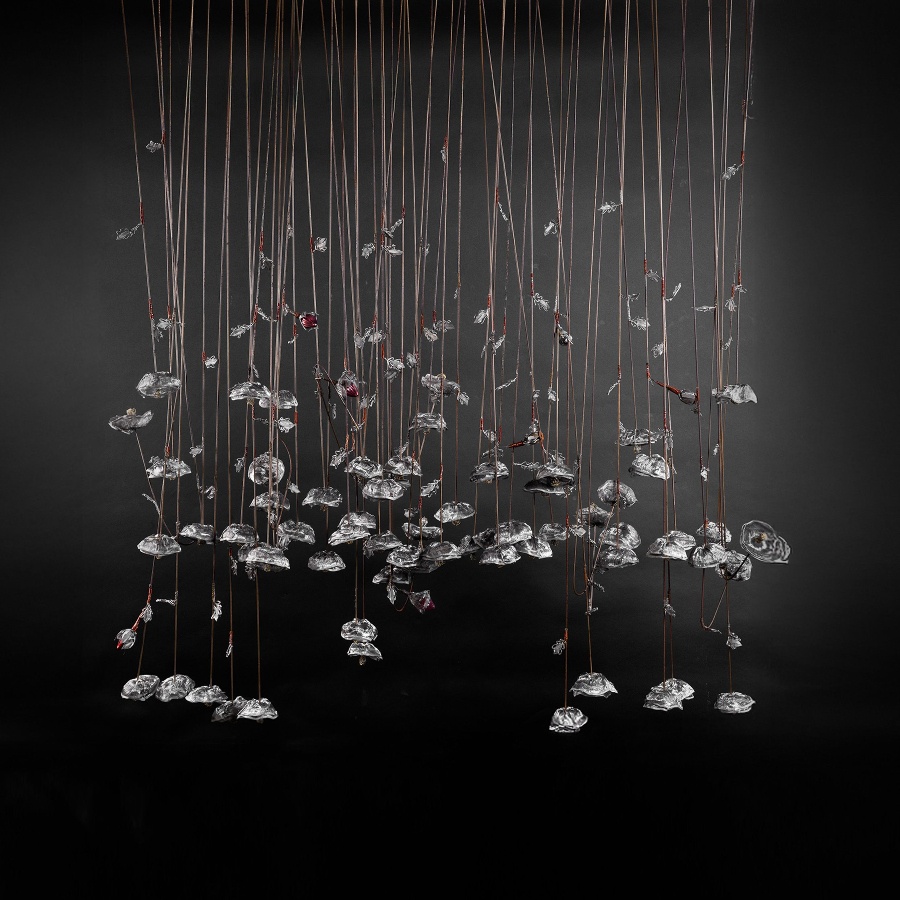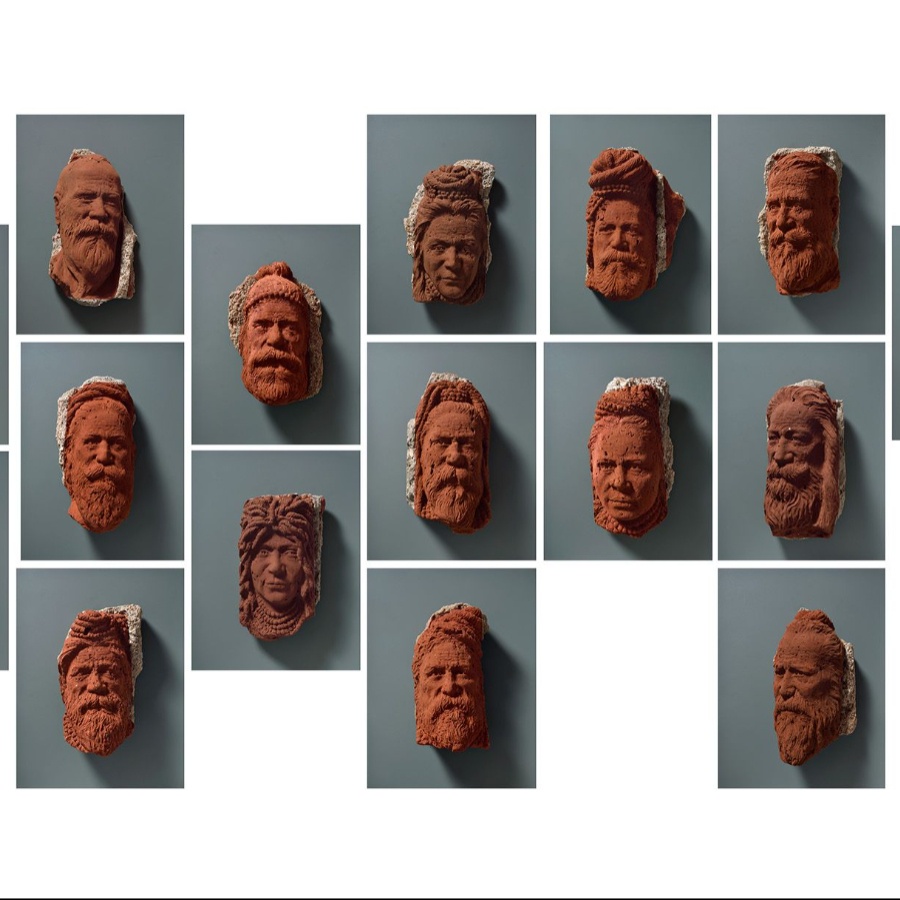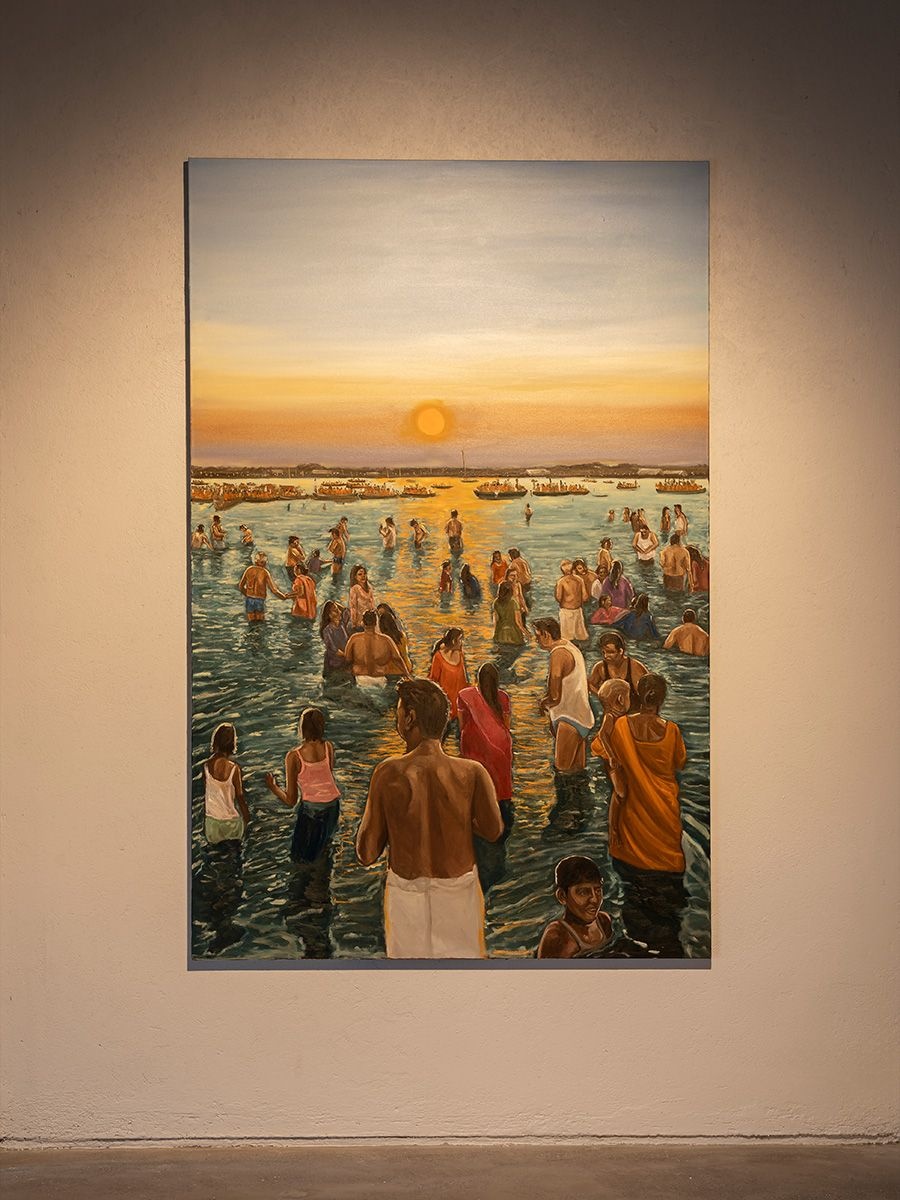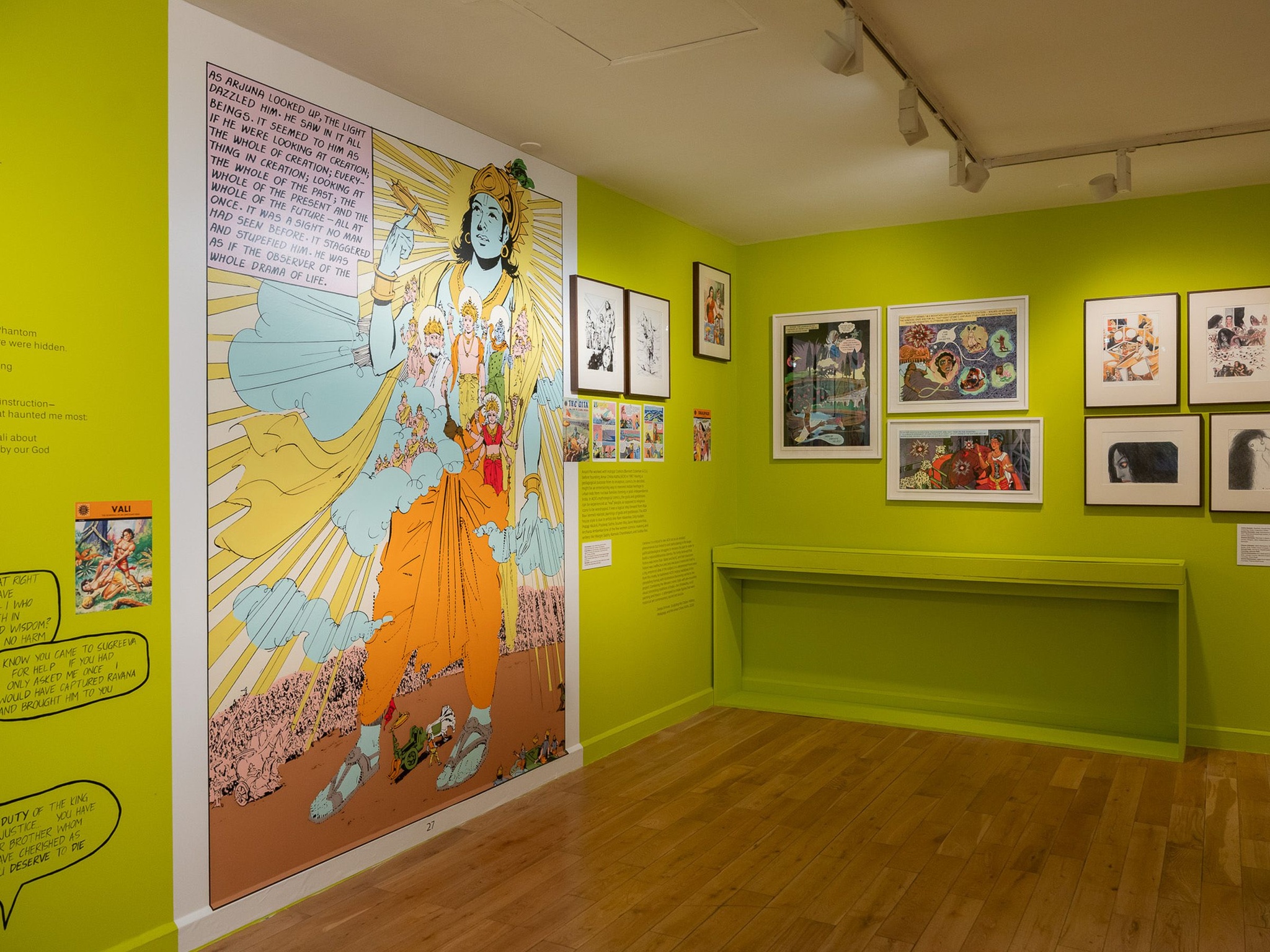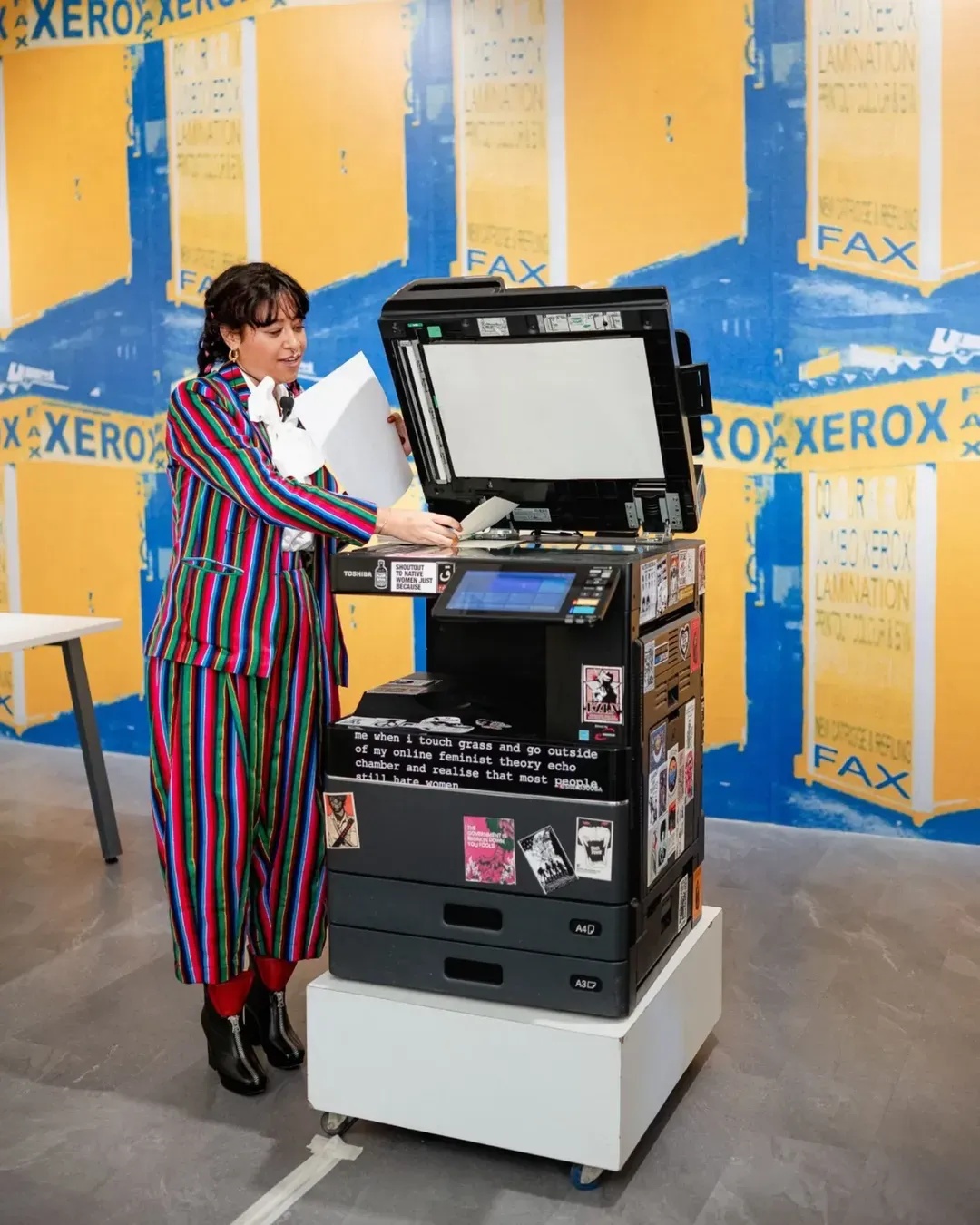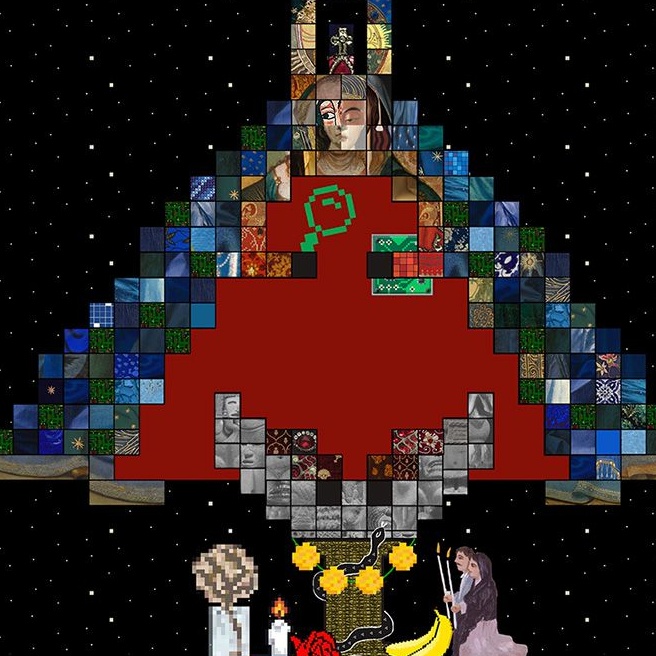In Delhi, at KNMA’s first library-like space, nothing is behind glass, like you’d expect in a museum. In fact, everything looks like it could run away if you don’t hold it down with a paperweight. And honestly, at any moment, you expect a speech bubble to pop above your head.
Three worlds open one after the other (stitched together by Himanshu S, Bharath Murthy and aqui Thami), sprawling enough to lose an afternoon in. Welcome to please touch gently (zines, comics, ephemera), where the only rule is to keep turning the page. Curatorial advisor Akansha Rastogi says, “We didn’t want to museum-ize this living print culture or put it under vitrines. It is an agile exhibition that moves and changes as the visitor opens it up, at their own pace.”
Before academia called it “self-publishing” and museums called it “ephemera”, zines and comics were simply put out by people refusing to wait for permission. They have always been the scrappy cousins of literature and art—cheap to make, easy to copy, impossible to control. Revolutions have travelled in folded paper, photocopied poems, stick-figure protests, and badly stapled comics.
Curated by artist Himanshu S, who also runs the tiny Fluxus Chapel in Mumbai’s Bandra and co-organises the Bombay Zine Fest, the first room feels like walking into a living, breathing zine. Three huge blue walls are covered in zines clipped neatly with binder clips, like a DIY library gone slightly feral. In the middle is a carpet and a pile of cushions where people are sprawled, lying on their backs, flipping through pages, getting up only to grab the next zine. And the range is chaotic brilliance—cat superheroes, alien romance, a zine earnestly titled The Art and Science of Billboard Improvement, and then suddenly one on dissent, Palestine, anarchy, protest.
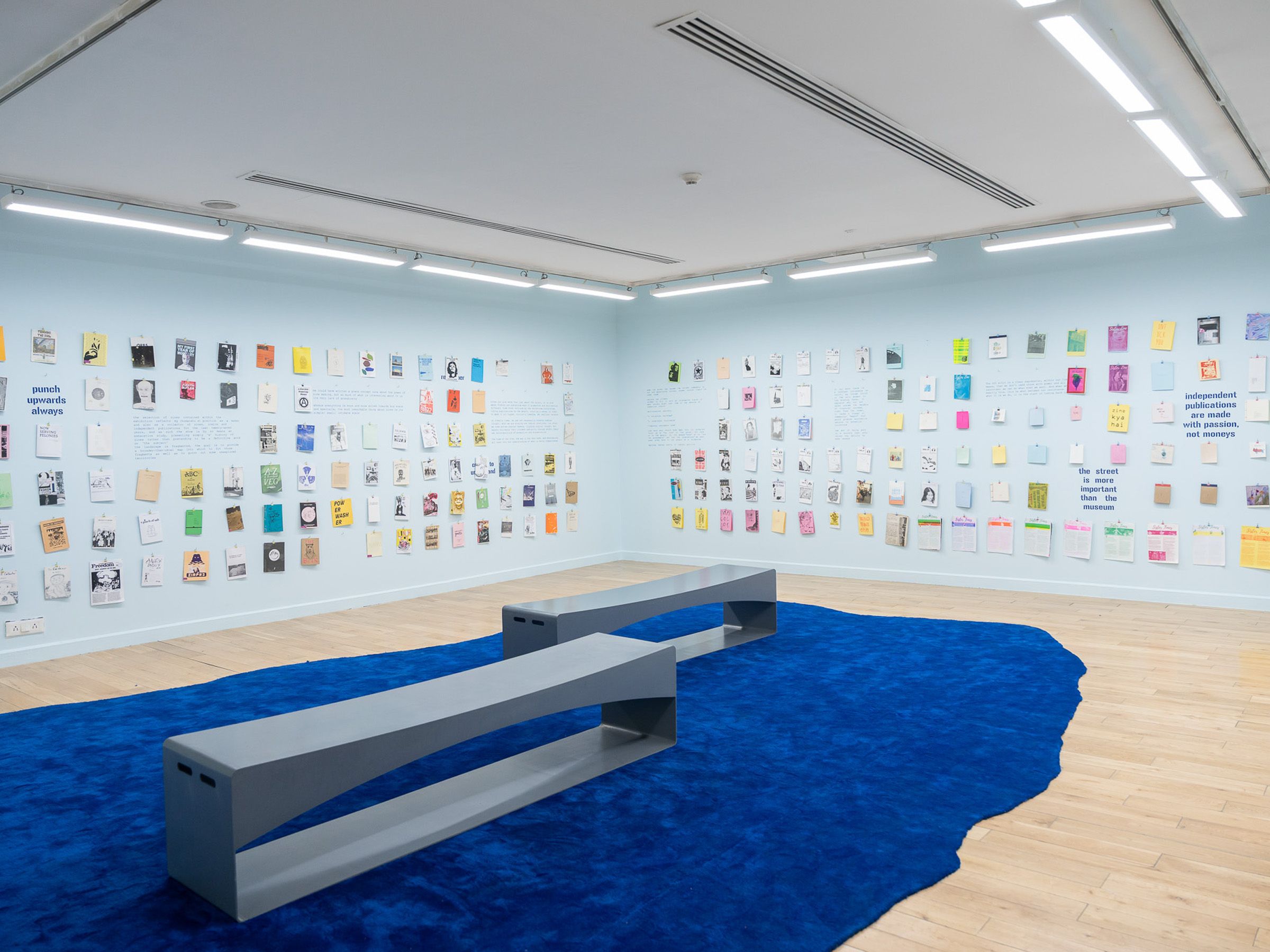
And then there’s the wall that looks empty. No zines. Just blue paint. You wonder why until you squint. The title of his section is faintly projected. It reads ‘disappearing is a good way to keep working’. It feels right for a room built for things that were never meant to shout, only meant to be discovered.
Step out of Himanshu’s blue zine universe and suddenly you are hit with lime-green walls and a full-blown mythological déjà vu. Comics author Bharath Murthy’s section feels like someone pressed rewind on Indian childhood and hit play in high definition. One entire wall is taken over by a giant Amar Chitra Katha panel: gods, demons, floating crowns, speech bubbles, and Brahma himself stretching almost floor to ceiling. Glass cases and shelves overflow with comics like Bahadur, Inspector Azad, Shuja, Chacha Chaudhary, Target and Sita’s Ramayana by Samhita Arni. It is mythology, pulp fiction, and campy superhero logic all living together. Raj Comics from the ’80s and ’90s sit like Amar Chitra Katha’s rebellious successors—less moral instruction, more flying kicks and melodramatic villains. This part of the room feels like every railway-station bookstall and childhood trunk exploded into a museum.
